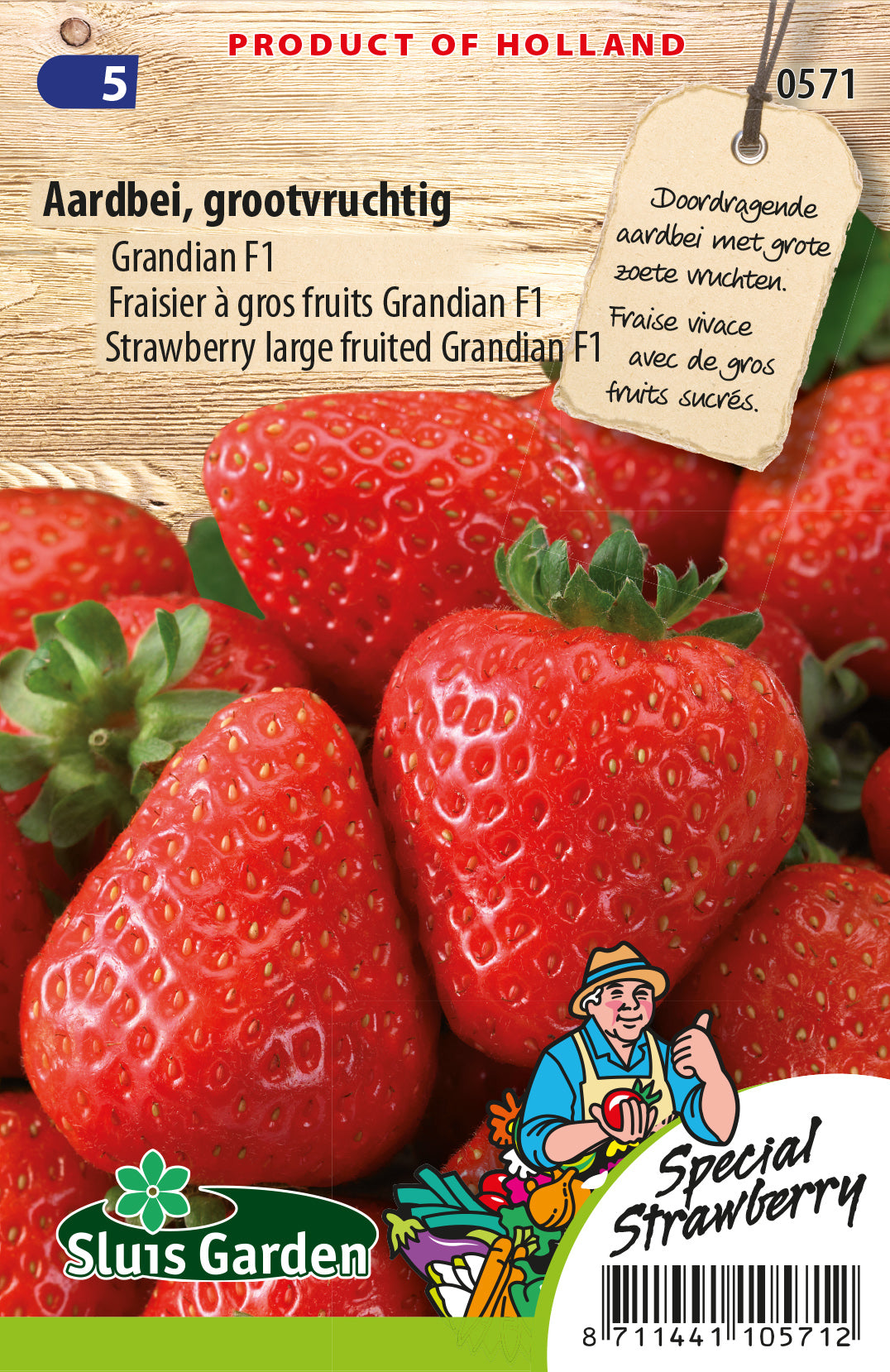Strawberry large fruited Grandian F1
Strawberry large fruited Grandian F1
Couldn't load pickup availability
Strawberry large fruited Grandian F1
Growing large-fruited strawberries like “Grandian” can be a rewarding experience. Here’s a guide to help you cultivate Strawberry “Grandian” successfully:
1. Planting Time: Plant “Grandian” strawberry plants in early spring or late summer, depending on your local climate. Early spring planting allows the plants to establish before the growing season, while late summer planting can provide a fall harvest.
2. Site Selection: Choose a location with full sun for at least 6-8 hours a day. Well-drained soil is crucial for strawberries to prevent root rot. Raised beds can be beneficial if your soil tends to be heavy or poorly drained.
3. Soil Preparation: Prepare the soil by incorporating organic matter like compost. Strawberries prefer slightly acidic to neutral soil with a pH between 5.5 and 7.0.
4. Planting Strawberries: Plant “Grandian” strawberry plants in rows, leaving about 18-24 inches between plants. Set the plants at the same depth they were in the nursery containers, with the crown (where the leaves emerge) at the soil level.
5. Watering: Keep the soil consistently moist, especially during dry periods. Water at the base of the plants to avoid wetting the leaves, which can contribute to diseases. A drip irrigation system or soaker hoses are ideal.
6. Mulching: Apply a layer of straw or mulch around the strawberry plants. Mulching helps retain soil moisture, suppress weeds, and protect the developing fruit from soil contact.
7. Fertilization: Fertilize strawberry plants with a balanced fertilizer at planting time and again in early spring. Follow the recommended dosage on the fertilizer packaging. Avoid excessive nitrogen, as it can lead to lush foliage at the expense of fruit production.
8. Runners: Strawberries produce runners (stolons) that can be used to propagate new plants. You can allow a few runners to root and form new plants for the next season. Alternatively, trim some runners to encourage energy toward fruit production.
9. Protection from Pests: Protect strawberries from common pests like slugs, birds, and insects. Netting or row covers can help deter birds, while slug traps or diatomaceous earth can control slugs.
10. Disease Management: Keep an eye out for common strawberry diseases, such as gray mold (Botrytis) and powdery mildew. Adequate spacing, proper ventilation, and removing old leaves can help prevent diseases. Fungicidal treatments may be necessary in severe cases.
11. Harvesting: Harvest “Grandian” strawberries when they are fully red and have a sweet aroma. Pick the berries carefully to avoid damaging the plant or surrounding fruit.
12. Storage: Consume freshly harvested strawberries as they are highly perishable. If you need to store them, place unwashed berries in the refrigerator and wash them just before eating.
Growing “Grandian” strawberries can provide you with large, flavorful berries for various culinary uses. Enjoy the fresh, homegrown taste!
Share

